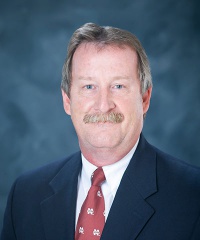
Dr. Wes Burger
Dean, College of Forest Resources
Director, Forest and Wildlife Research Center
Years in Position: 1
Years at MSU: 30
Hometown: Born in Kentucky, Grew up in Southern Indiana
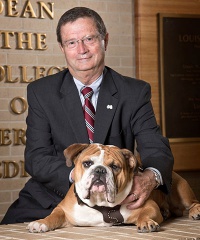
Dr. Kent Hoblet
Dean, College of Veterinary Medicine
Years in Position: 16+
Years at MSU: 16+
Hometown: Rural Country Western Ohio, along the Indiana line
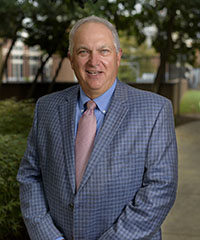
Dr. Steve Martin
Interim Director, Mississippi State Extension Service
Years in Position: < 1
Years at MSU: 23
Hometown: Pontotoc, much of adult life spent in Cleveland/Stoneville
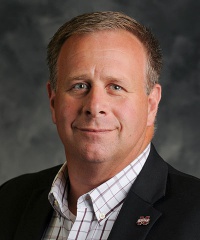
Dr. Scott Willard
Dean, College of Agriculture and Life Sciences
Director, Mississippi Agriculture and Forestry Experiment Station
Years in Position: 1
Years at MSU: 24
Hometown: Born in Marysville, OH, but grew up in Ridgefield, CT
What led you to agriculture, forestry, or veterinary medicine?
Burger: My career choice was deeply shaped by the outdoor experiences I shared with my parents and siblings camping, canoeing, hunting, and fishing. My passion for the land and its stewardship was informed by my grandfather, who was a farmer and deeply committed to conservation. From the time I was in third grade, I was a member of the National Wildlife Federation. TV shows like Mutual of Omaha’s Wild Kingdom with Jim Fowler and immersions in NWF magazines helped me understand that this doesn’t have to just be a hobby—it could be a career. By the time I was in fifth grade, I knew I was going to be a wildlife biologist.
Hoblet: I grew up on a dairy farm and was a member of 4-H and FFA. At the time I graduated from high school, my first choice probably would’ve been farming. My parents insisted I go to college. I’m a first-generation college graduate. Unlike a lot of kids who decide to be a veterinarian when they’re 6, I didn’t decide until I started college. I went to Ohio State, and I really liked production agriculture and biological sciences. I figured veterinary medicine was a good way to combine that.
Martin: As a child, I wanted to work for Extension. Why? Working in industry, I was interested in commodity markets. I got a degree in Agricultural Economics from Mississippi State, so that’s how I ended up here. It was a pull partly from the Extension side and partly from the industry side.
Willard: I’ve always loved animals. Growing up, we would go back to my family’s farm in Ohio, so I had that exposure at a young age. When I started college at the University of Rhode Island, I was majoring in Marine Biology. After taking intro to animal sciences as an elective, I realized I could major in that, so I changed my major to Animal, Veterinary, and Fisheries Studies.

Where is agriculture, forestry, and veterinary medicine headed in the next 5 – 10 years?
Burger: The demands for housing are not going to decline. When we look at forest markets, the primary driver in the Southeast is housing starts. In Mississippi, we’re growing more forests than we’re harvesting. We call that the growth-to-drain ratio, and here in Mississippi it’s about 3-to-1; across the Southeast, it’s closer to 2-to-1. The Southeast is an important region for the production of forest products, and it’s going to become increasingly important in the future as we move to satisfy growing demands for housing. But it’s not just housing. As we look for environmentally sustainable ways to reduce our greenhouse gas emissions and we look to larger infrastructural construction, wood products are a really good substitute for greenhouse gas-intensive materials like concrete and steel. In the Department of Sustainable Bioproducts and the industry at large, we’re working hard to develop new value-added products that can be used as advanced construction materials to build multistory buildings and houses in ways that are ways rapid, efficient, durable, and sustainable.
Hoblet: I see specialization continuing across the board. The small animal side has paralleled what’s happened in human medicine. For example, 30 years ago, we didn’t have MRIs and CTs in veterinary medicine. I tell people when they come for a tour—most of the things I can have done on me at the University of Mississippi Medical Center, we can do on your pet. Certainly, in the southeast, we’re the go-to place for neurology and neurosurgery. On the large animal side, horses are the same way. A lot of it is a companion animal-type approach. We graduate a student who is ready to go into practice, but if they want to be competitive and serve in a specialized area, for example, the poultry industry or ophthalmology, they need specialized training beyond a DVM degree. That doesn’t negate the task of getting general practitioners. General practitioners are where it starts.
Martin: With the rapid expansion of technology, Extension is going to be even more important to educate people and keep them up to date so that no group gets left behind. Twenty – thirty years ago, if you missed a step, you had time to find out and catch up. Now, if you miss a step, three more steps have happened before you even realize it. So, reaching people - whether it’s row crop farmers, homemakers, or youth -through new methods of media and technology to provide nonformal education and keep them up to speed will be more important than it’s ever been.
Willard: Technology will drive a lot of it – autonomy, smart devices, artificial intelligence. Opportunities for Mississippi in continuing to make gains in yield and efficiency of operations in ways that are sustainable - not only to keep pace with changing regulations or mindsets but also to have sustainable enterprises in our ag landscapes for the future. We still need leadership skills in our undergraduate and graduate students so they can be molded in the industries or places they work – so that part is really not that different than today. We will always need a capable, flexible, and driven workforce.

What industry challenges is your unit working to address?
Burger: There are always challenges to developing new products that are durable, renewable, and can be sustainably produced. Our sustainable bioproducts team is looking at new value-added forest products that will get the most out of the timber resource that we produce. At the same time, our faculty are working to build markets and supply chains that can support the forest industry and forest landowners. To maintain healthy forests, we must have healthy markets, and that includes the mills, transportation networks to get the wood to the mill, and a skilled workforce to safely harvest the timber in the woods, load it, transport it, and then turn it into value-added products. One of the challenges is helping to ensure the forest landowners around the state and region have access to markets so that they can move those forest products. We've got some great economists in the college who are working to help resolve and bring new industries to the state—industries that support our forest landowners, as well as rural communities and the state economy. The COVID pandemic has shown us the importance of how human health relates to diseases that originate in wildlife populations. Scientists in the Department of Wildlife, Fisheries, and Aquaculture are working with state and federal partners on surveillance, diagnostics, and response to the emerging Chronic Wasting Disease in white-tailed deer.
Hoblet: A challenge we have is getting the distribution of veterinarians correct. It’s a lot easier said than done. Veterinarians go where the people are. We think about veterinarians treating animals, and we do, but animals must have people associated with them. So there’s a maldistribution of veterinarians in rural America right now. It’s not just Mississippi; it’s a national issue. We’re one of the few veterinary colleges in the U.S. that requires two years of clinical education. In that final two years, all students will be required to do two external rotations, and one of those must be done in either a large animal or mixed animal practice in a rural area. We’re trying to get students exposed to the industry’s issues. Some of them who may have not been in a rural area may say, “This is pretty cool. I think I can do this.” That’s unique among veterinary colleges right now. I don’t know of anyone else who’s requiring that, so we’ll see how it works.
Martin: There’s tremendous competition with the labor shortage, and that’s a challenge you see everywhere. Our biggest challenge is having the salaries we need to keep the people in place that we need—the brightest scientists and agents—to reach our clientele and make sure we stay on the cutting edge.
Willard: It might be easier to talk about what we aren’t working to address… MAFES/CALS spans the gamut from child development to landscape architecture to biochemistry to plant and animal science. We’re working to build sustainable and efficient production enterprises and integrate technology and precision systems in agriculture. We’re also looking ahead to where future issues may lie and identifying how to get ahead of certain issues or problems whether it’s disease-related, climate-related, human-capitol-related, etc. Being proactive in our faculty hires is always top of mind to source those who are the best researchers and educators in their fields.
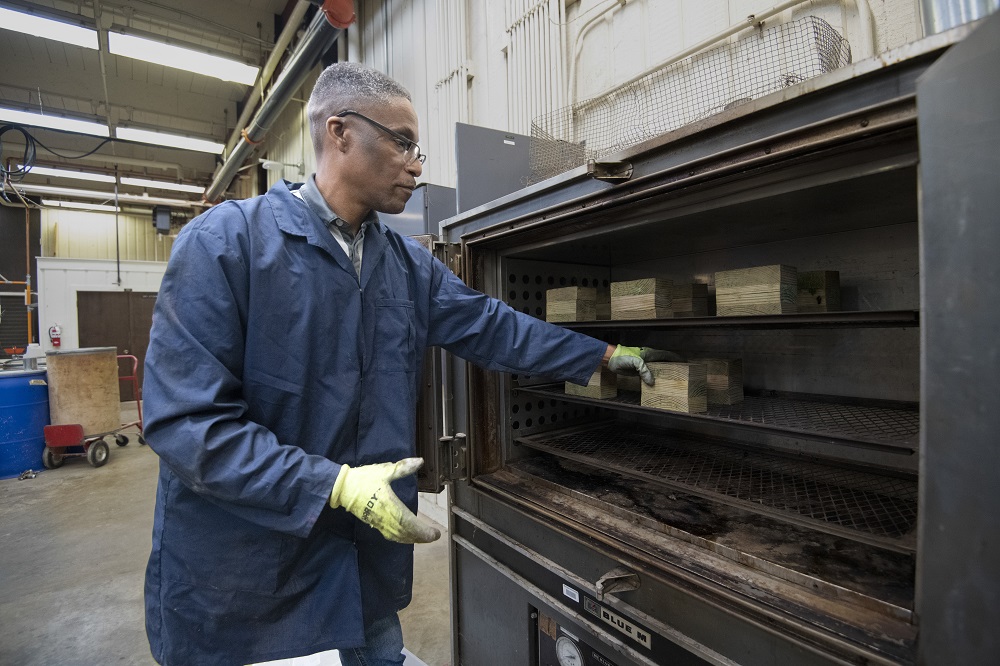
What is happening in your area that may surprise people to know?
Burger: I think very often people have an antiquated view of the forest industry. It’s not just the guy in the woods with the chainsaw and the diameter tape. That's still an important part of it, but there’s so much room in our discipline whether you’re interested in chemical engineering, construction, geospatial technologies, big data analytics, population ecology, or molecular biology. The 2020 U.S. Department of Labor study reported that between 2020 and 2025, career opportunities in the natural resources/environmental science areas would grow between 3.5 and 5% annually. We do a lot of work to expose K-12 students at multiple stages to natural resources and the environment to cultivate those interests so that when they are juniors or seniors in high school, we can talk to them about career paths that are not only highly important and relevant but also extremely fulfilling.
Hoblet: We are national leaders in shelter medicine and epidemiology. If you look at food safety and security, we’re the top aquatic health program among all U.S. colleges of veterinary medicine. That may sound like bragging, but it’s a fact. We were selected to host the USAID Feed the Future Innovation Lab for Fish. We’re working in 11 countries on 20 projects, and by doing that, it enables us to keep a core group of specialists at MSU. The primary reason we have them is because of the catfish industry. If you’re going to continue to serve the catfish industry, you’ve got to have industry experts, and one way to do that is by continuing to do things to keep that core mass of critical faculty, while not negating our role in Mississippi. We’re also a leader in studying antimicrobial resistance (AMR). That’s a public health issue. There’s a worldwide concern about the overuse of antibiotics and resistance. Well, we’re one of only four institutions chosen by UN Food and Agriculture Organization to be a repository for aquatic AMR—one is in India, two are in China, and one is at Mississippi State University!
Martin: One of the things that surprise people is that we have a presence in every county and that we have as broad of a spectrum of education—health, stress, nutrition, agriculture, youth through 4-H—and that is available to everyone in every county in the entire state!
Willard: We have multiple building projects underway – a livestock judging pavilion for Animal Science, a Food Innovation Center concept, and renovations of Ballew Hall as the new home for CALS/MAFES.
Beyond the main campus, we have more than 20 off-campus research farms, laboratories, and centers to meet the needs of Mississippians where they live.
On average, we produce 475,000 gallons of milk, 50,000 balls of Edam Cheese and 25,000 gallons of ice cream each year as the products of the MAFES dairy operation and processing plant.
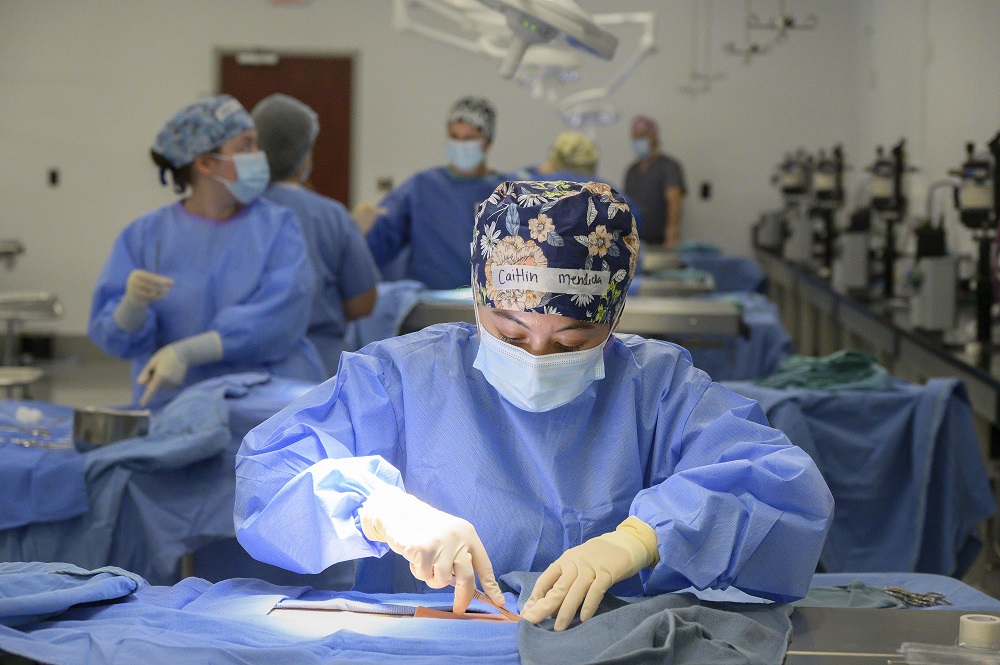
What do you love about your job?
Burger: The work we do in the college and research center and my personal research program is all about how we manage, utilize and conserve our natural resources for the benefit of society and the environment. I love what I do. It’s important. It’s relevant. It’s impactful to landowners, but also to our entire society that depends on that food, fiber, and fuel that’s coming from privately owned forest and ag land. We have an obligation to manage these lands so that they provide resources not just for us today but for our children and grandchildren.
Martin: What I love most about what we do is that we solve problems for clientele—producers, youth, and citizens in Mississippi and beyond. That makes a difference in their lives. It makes them more money. It makes them better people. It improves lives no matter what the topic is.
Hoblet: Veterinary Medicine has been really good to me. Being in private practice for 12 years was good. I liked my time at Ohio State working in Extension with dairy farmers and dairy cattle veterinarians. I’ve enjoyed my time at Mississippi State. I like the variety of what I’ve been able to do. I’ve been blessed in this career.
Willard: As Dean/Director it’s providing the resources for our faculty and staff to impact our students and stakeholders. The challenge of trying to meet the needs, whatever those may be, whether it is working on curriculum with the faculty to meet the needs of students and employers, providing resources for our researchers to solve problems, or garnering information from our stakeholders on their issues and problems and then trying to create opportunities to address them.

When you’re not working, what are you doing?
Burger: All my hobbies involve the outdoors. I’ve been passionate about bird hunting since my grandfather took me on my first bird hunt when I was nine. I love fly fishing, camping, hiking, and kayaking. My wife, Leslie, [also a biologist] and I had the joy of sharing those experiences with our three sons when they were growing up. We have made intentional choices to live close to the land, natural resources, and our food supply. We are avid gardeners. On our small farm we raise produce and fruit in about 25 raised beds and a large flat garden. We've had horses, chickens, quail, and goats, and we’re also forest landowners.
Hoblet: My wife might say I don’t have any spare time. We have three grown sons and their families who live in Ohio, North Carolina and Oregon. I’m stepping out of the Dean’s role in the not-too-far future, and I’ll work part-time here at the college. We’re planning to do more traveling to see family. I also like to read.
Martin: I enjoy hunting and being outdoors. My wife and I have a cabin in the Delta, and we enjoy spending time there with our children and grandchildren.
Willard: I have a small 24-acre farm with horses, cattle, chickens, catfish pond, etc. that keeps me busy. I tinker and work on antique cars and trucks. I enjoy researching family genealogy and some art history projects related to historical family connections. My distant uncle Archibald M. Willard was the artist who painted The Spirit of ’76.
